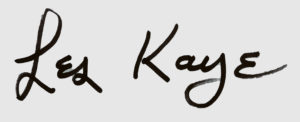Victims of Hijacking

The Abbot’s Letter
April 2021
“Victims of Hijacking”
In 1958, I started working for IBM in its new product development laboratory in San Jose. In those days of barely emerging technology, IBM dominated the business machines environment. Companies of every size, in every industry, were heavily invested in those mid twentieth-century electro-mechanical devices, the first to automate handling and processing of digital information. Punched cards were everywhere: in desk drawers, file cabinets, purses, wallets, coat pockets and glove compartments.
On my first project, I joined a small team of engineers and machinists developing a process for transporting and reading a new prototype design for a punch card containing three times as much information as the original card. If we were successful, the so-called “advanced” card would significantly improve the capacity of IBM card-handling machines.
I found the work exciting and satisfying – designing, building and assembling physical components, running tests with prototypes of the new card, analyzing data and refining the design. Executives flew in from New York for demonstrations.
One morning, following two years of progress and optimism, my boss assembled our team in his office. He announced that the project was cancelled, explaining that IBM was initiating a new approach to its business, one that did not involve punched cards. The senior engineer asked about the new strategy. The boss replied: “Something called software.”
Fast forward from the early 1960s through the creation of the world wide web, the internet, personal computers, tablets, servers and cell phones. Information from many sources became instantly and continuously available. Today we have advertisements, websites, social media, opinion pieces, commentaries, blogs, YouTube videos, and cable news. The hardware-oriented ‘business machines’ era ended over half a century ago; now we are in the ‘information age,’ often referred to as the ‘attention economy.’ As a result, our mental information radar is always ‘on,’ our awareness subject to an overwhelming abundance of news, opinion and forms of entertainment.
Today we increasingly live our lives online, giving much of our attention to the cyber world. Competition for our attention is pervasive: media, advertisers, and politicians want our money, our vote, and our loyalty. Brands of products, organizations, and belief systems promise a better life. Along with conspiracy stories that are not entirely truthful, they try to create compelling narratives in order to highjack our attention. The constant pressure makes us vulnerable and makes us victims. It is a major source of stress in today’s world.
But hijacking of the mind – a form of mental theft, an intrusion into our awareness – did not start with modern software – it has always been with us. More than two thousand years ago, Buddhisim recognized how the inherently aware mind can be compromised, not by advertisements, social media or societal forces, but by ourselves, by our own thoughts, desires and distractions. It is the story of how we victimize ourselves.
Chapter Two of the Dhammapada emphasizes the necessity of being unconditionally aware, remaining in our natural awakened state, undistracted:
Wakefulness is the way to life.
The fool sleeps
As if he were already dead,
But the master is awake
And he lives forever.
How happy he is!
For he sees that wakefulness is life
How happy he is,
Following the path of the awakened
To be wakeful is to always be in total awareness, as if continually bathed in moonlight, whereas the fool is lulled to sleep by distractions and does not notice the moon.
In Zen Mind, Beginner’s Mind, Suzuki-roshi says:
I discovered that it is necessary, absolutely necessary, to believe in nothing. That is, we have to believe in something which has no form and no color – something which exists before all forms and colors appear.
What exists before all forms and colors and things of the world is Awareness, Buddha mind. Awareness is sacred in Buddhism, rather than external deities. Zazen practice keeps Awareness accessible by enabling us to recognize and let go of distractions. Every discriminating thought or act of uncaring is a hijacking of awareness. By continuing our practice, we prevent hijacking of our inherent wisdom and compassion.
Les Kaye
Abbot of Kannon Do


